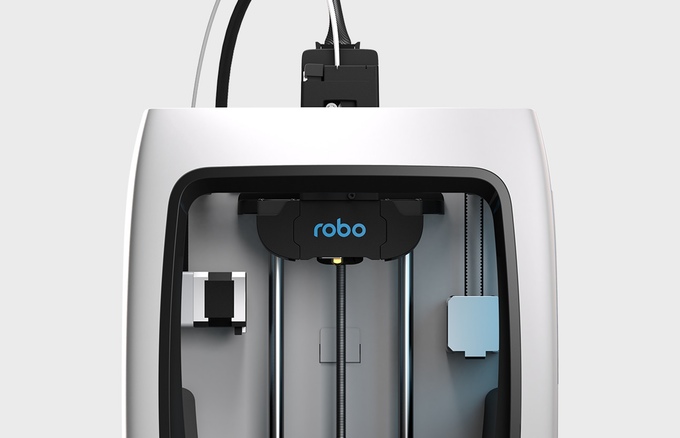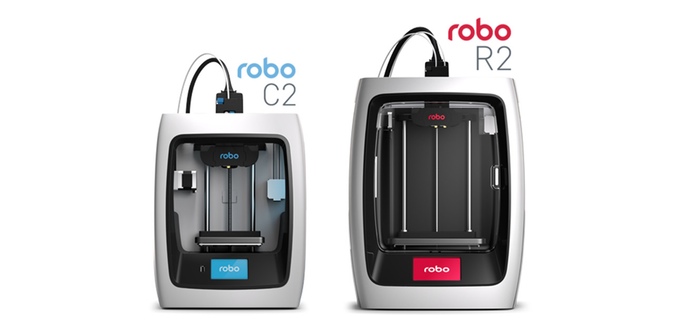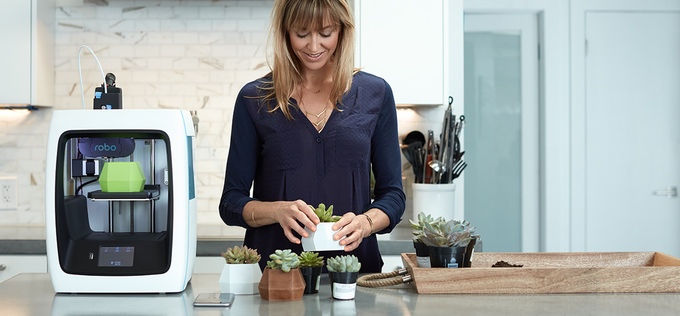
After several successful years, startup Robo 3D has significantly updated their product line with a couple of sophisticated low-cost desktop 3D printers.
The new machines are the slick-looking Robo C2 and Robo R2, targeted at entry level and prosumer markets, respectively.
The new look is quite attractive, and it’s due to Robo 3D partnering with an industrial design firm.

But after you get over the looks, it’s the meat inside the machine that counts more. And these two machines pack a pretty decent set of features.
Both machines offer a number of advanced features, particularly at their price levels. Central to the new feature list is a software ecosystem composed of a WiFi network connection, a cloud service and an app.

With the app you have complete control over the 3D printer, with the ability to start, monitor and stop prints on multiple devices, access libraries of 3D models, access tutorials and even purchase supplies and accessories. It seems that the service is compatible with Octoprint, as they explain it can control “any Octoprint Enabled 3D Printer”.
The two machines also include a self-leveling feature to increase print reliability, the ability to slice 3D models on the machine itself, and a detector for end-of-filament.
Robo 3D explains that the machines are “high speed” and cites a spec of “Up to 16 mm3/s”, which is a measurement not commonly used, although it may be more accurate than the simpler “mm/s” used by most vendors.

A very interesting specification for both machines is the minimum layer size: 0.02mm, which is quite small. Prints should be very smooth at that resolution.
The smaller of the two, the C2 model, has a 127 x 127 x 152mm build volume – a bit larger than competitive “mini” style units. This machine also includes a color touch screen and is priced at USD$499 and up (UPDATE: price is now USD$599 and rising).
The larger unit, the R2, includes a 203 x 203 x 254mm build volume, a heated print surface to permit successful and reliable printing of multiple advanced materials, and an on-board camera to show print progress remotely to the app, or even capture time-lapse movies of prints. There’s also the ability to add a second extruder for the ability to print two materials during a print job. The R2 is priced at USD$999 (UPDATE: Price is now USD$1099).
It looks like Robo 3D has taken a big step forward with these two new units, continuing their practice of providing a good feature set at a low cost. The public reaction has been very positive, too: they’ve hugely blown past their funding goals as of this writing.
Via Kickstarter and Robo3D

